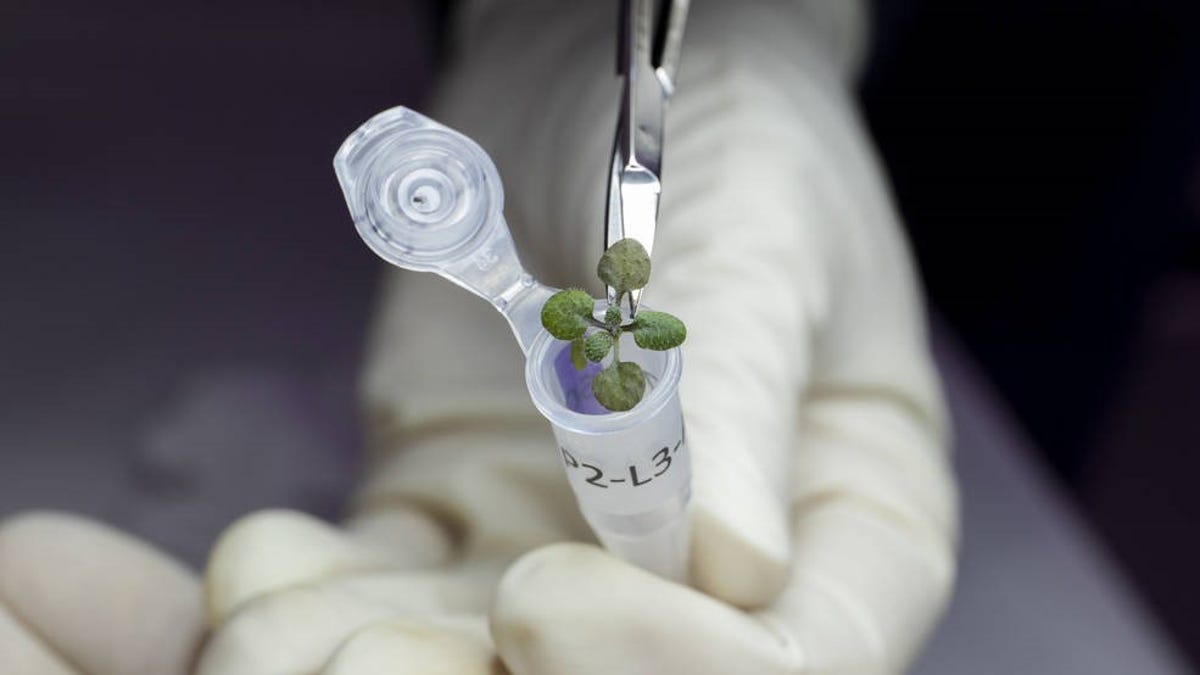Scientists Grow Plants in Moon Soil for First Time: 'Everything Sprouted'
Are we looking at our future lunar lunch?

A plant grown during the experiment is transferred to a vial for analysis.
When NASA launches Artemis astronauts back to the surface of the moon in the years to come, they should be able to grow their own salad. That's just one ramification of a historic experiment in which scientists used samples of lunar surface material, called regolith, to grow plants here on Earth.
The scientists planted seeds of the plant Arabidopsis thaliana, which is related to mustard greens, in tiny samples of the regolith collected on three different Apollo missions a half century ago.
But while the seeds germinated and grew, they didn't exactly thrive.
"Lunar soils don't have a lot of the nutrients that are needed to support plant growth," Stephen Elardo from the University of Florida said during a press conference Wednesday.
Elardo is a co-author on a paper presenting the research published in the journal Communications Biology on Thursday, along with Anna-Lisa Paul and Robert Ferl.
While the plants grew in a way that indicated they were stressed, they still found a way relatively quickly, with a little help from the team providing them with light, water and nutrients.
"After two days, they started to sprout," Paul, who is also a professor in horticultural sciences at the University of Florida, said in a statement. "Everything sprouted. I can't tell you how astonished we were. Every plant -- whether in a lunar sample or in a control -- looked the same up until about day six."
By the end of their first week, the plants in regolith showed slower growth, stunted roots and leaves, and some red spots. Later genetic analysis would confirm the greens were under stress.
Lunar regolith is very fine-grained and powdery, but don't be fooled, because those grains are also sharp-edged. Breathing in lunar dust can damage lungs, and the stuff isn't particularly hospitable to plant life, either.
"Ultimately, we would like to use the gene expression data to help address how we can ameliorate the stress responses to the level where plants -- particularly crops -- are able to grow in lunar soil with very little impact to their health," Paul added.
Ferl says growing plants on the moon is the key to a long-term stay on the moon by helping provide not just food but also clean air and water for astronauts and other visitors.
"When we go to space somewhere, we always take our agriculture with us," said Ferl, also from the University of Florida. "Showing plants will grow in lunar soil is actually a huge step in that direction."

